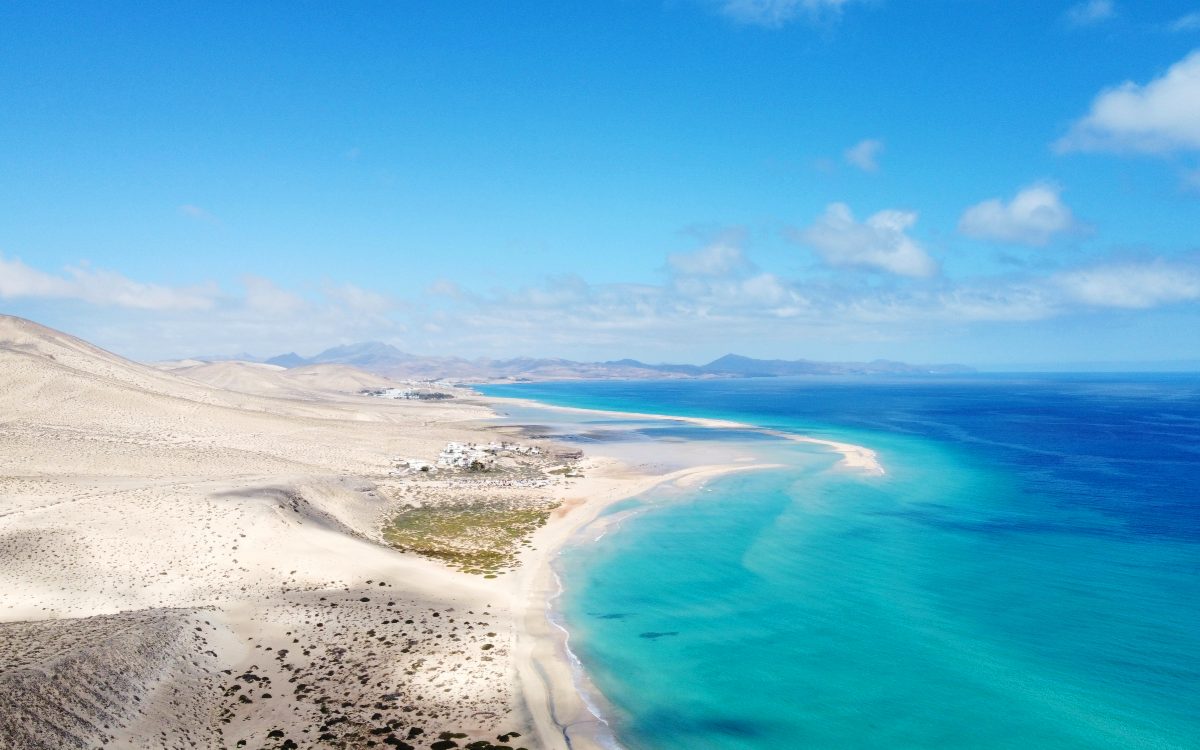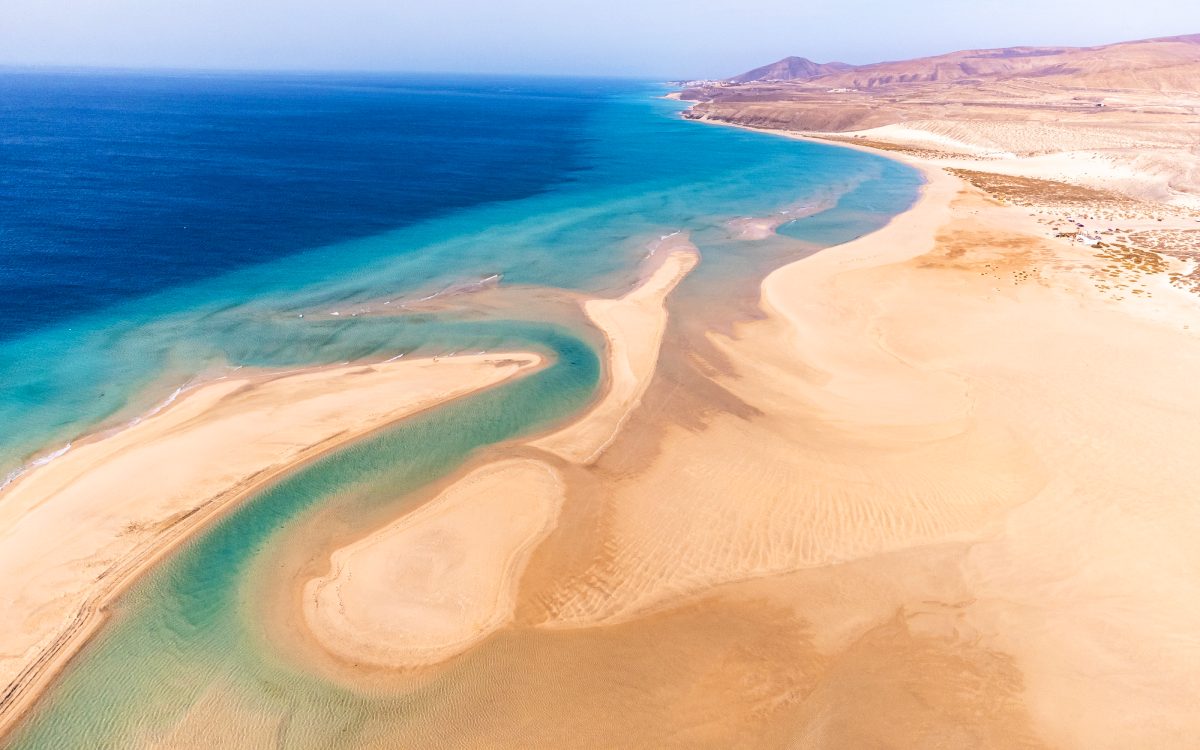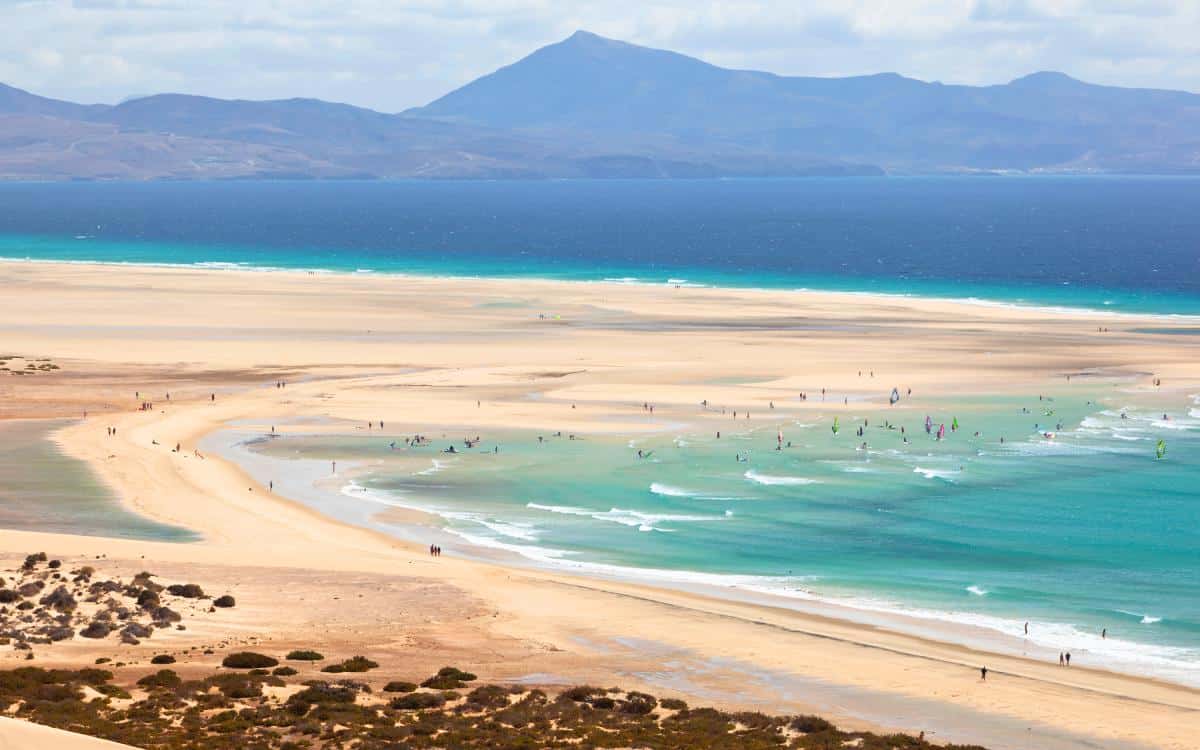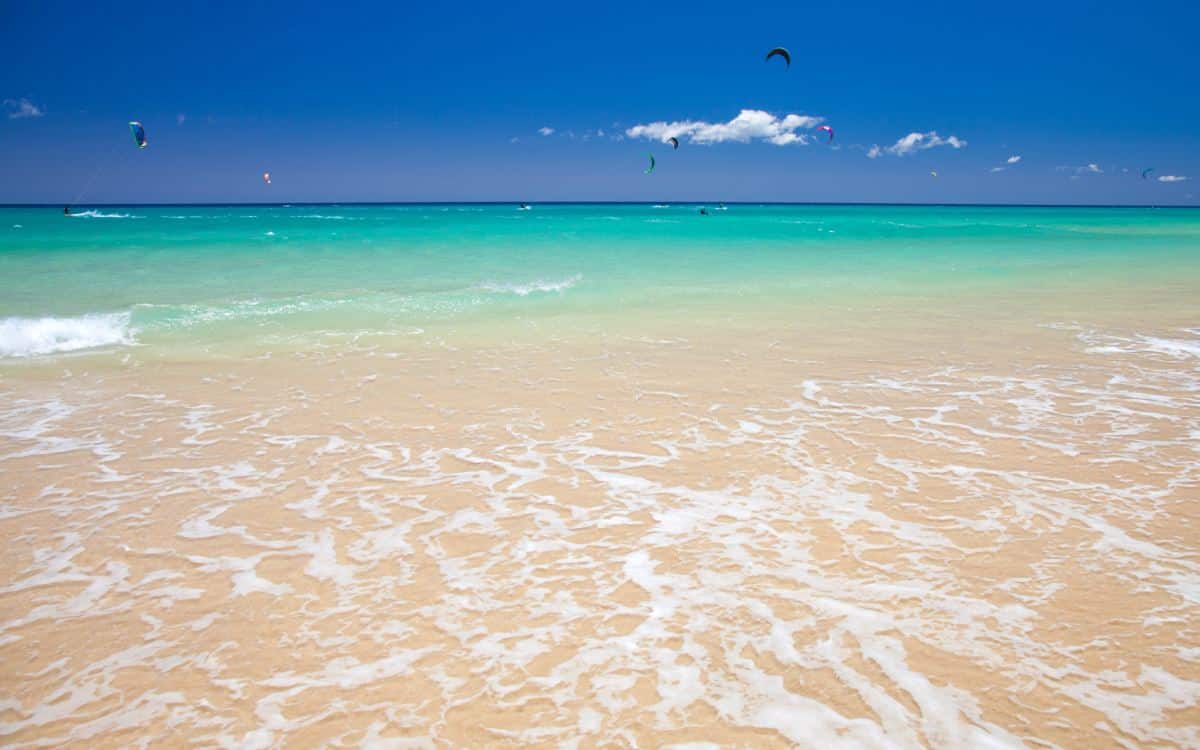
Crystal-clear waters of a breathtaking turquoise colour embrace a beach with sand so golden that it’s almost white. It’s hard to know where the landscape ends and begins from the shore, but from the air, it’s obvious how marvellous this natural landscape is. These colours and their infinite possible shades blend together, creating an idyllic postcard. This paradise might seem far away from Spain, but you don’t have to travel thousands of miles to enjoy this magical scene known as the ‘Spanish Maldives’.

The ‘Spanish Maldives’. | Shutterstock
This paradisiacal corner of wild and extraordinary beauty sits on an island. But it’s not a Caribbean island, nor isn’t it surrounded by the waters of the Indian Ocean. To explore and enjoy this beach, you need to go to Canarias. In particular, to the island of Fuerteventura. The ‘Spanish Maldives’ await you in the Jandía peninsula, in the far south of the island: the Playa de Sotavento.

Playa de Sotavento. | Shutterstock
There are many reasons why Sotavento is an extraordinary beach. Its environment has remained unspoilt, except for the capricious actions of the same nature it was shaped by. The wind and the waves are the only ones who dare to disturb the silence and calm around them. It’s difficult to resist the beach’s charms since it isn’t only one of the most beautiful beaches in Spain, but also one of the most captivating.
But we could also say that it isn’t just one beach. In Sotavento, 5 sandbanks intertwine, adding up to almost 10 kilometres of paradise. They are called Risco del Paso, Mirador, Malnombre, Los Canarios, and La Barca. The latter brings one of the most iconic images of this corner in Fuerteventura: an impressive sandspit of salt water surrounded by golden sand.

Playa de Sotavento. | Shutterstock
Playa de Sotavento sits away from urbanised areas, inviting visitors to relax almost in solitude and to be seduced by this dream environment. Taking your time to explore it and waiting for the sun to set are worth it. The sand shines brightly under the warm, orange sunset, creating a beautiful view that you will never forget.
There is even more to this endless sandbank. Its shallow waters make it the ideal spot to spend a day at the beach with the youngest members of the family paddling the water. Other areas of the beach are perfect for snorkelling and discovering the beach’s singularity, hidden under the water. And you won’t need to wake up early to find the perfect spot or fight to place your towel or to take a dip.

Water sports in the Playa de Sotavento. | Shutterstock
The wind might be the only inconvenience since the beach is buffeted constantly. However, the presence of that wind makes it possible to appreciate another gorgeous view: a landscape painted by the thousands of colours of surfboards, sails, and kites. Sotavento has the exceptional requirements to learn and practice sports such as surfing, kitesurfing and windsurfing. Actually, it hosts international events around some of these sports.

Playa de Sotavento. | Shutterstock
Located between Jandía and Costa Calma, this beach can be accessed through paths that are unpaved in certain sections. From both of these two urban areas, you can reach the ends of the beach in a nice walk. However, if you want to get to its heart, the Playa de la Barca, you might prefer to do it by car or bicycle.
The Playa de Sotavento is one of the most idyllic corners on the peninsula of Jandía, in the far south of the island of Fuerteventura. But its charm goes even further and there is much more to see. In fact, it has one of the largest natural parks in the Canary Islands.

View from the Pico de la Zarza. | Shutterstock
Fuerteventura’s highest point is on this peninsula, the Pico de la Zarza. Its 807 metres of height provide spectacular views of the peninsula, where you will find dunes, impressive cliffs and beaches like Sotavento and the equally breathtaking Cofete. A seemingly hostile land of great value, not only because of its gorgeous landscape but also because of its nature.
Thousands of years ago, this peninsula used to be an island. It joined Fuerteventura by an isthmus that barely reaches 6 kilometres in its narrowest area. In the past, they were joined only in some areas since a wall was built to separate the peninsula from the rest of the island in the pre-Hispanic era. It is believed that this wall prevented free cattle from reaching pasture reserves.
You can also read this article in Spanish here.
Follow us on Facebook!